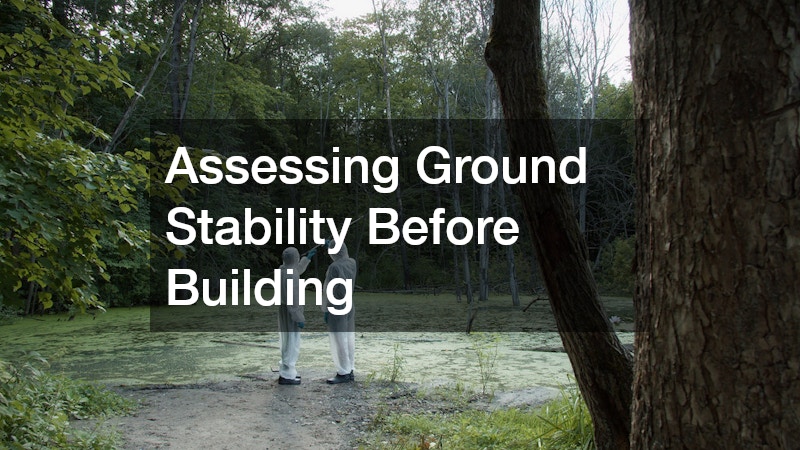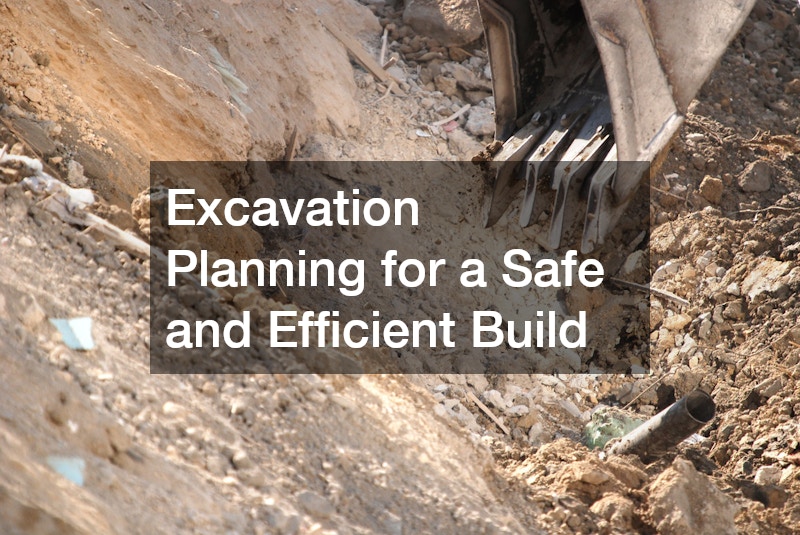Launching a construction project, whether for a commercial building, retail space, or industrial facility, begins long before the first shovel hits the ground. For businesses looking to establish a strong foundation, careful planning is critical. One of the most important tools in this process is a comprehensive executive plan. This plan acts as a roadmap, guiding every phase of site development, from selecting the right location to ensuring the building stands the test of time.
Site development encompasses more than just erecting structures—it involves a meticulous sequence of tasks, including land preparation, surveying, excavation, foundation work, and installation of essential utilities. Each step must be coordinated with precision to prevent delays, avoid cost overruns, and ensure regulatory compliance. Without a detailed project roadmap, businesses risk encountering unforeseen challenges that can derail even the most promising projects.
A well-crafted executive plan also allows project managers to anticipate risks, schedule contractors efficiently, and allocate budgets wisely. From hiring the right contractors to coordinating specialized trades like electricians or roofing teams, this plan keeps everyone on the same page. Moreover, the right preparation can have long-term benefits, not only enhancing the structural integrity of the building but also supporting future expansions or renovations.
In this guide, we’ll explore top strategic blueprint tips for smooth site development. Each stage of the project will be broken down, highlighting critical considerations and strategies to help businesses execute construction efficiently and effectively. Whether you’re a seasoned developer or a first-time business owner, following these tips ensures your project starts and finishes on a solid footing.
Preparing Your Property for Construction
The first step in any construction project is preparing the site, and a solid executive plan is essential for guiding this stage. Before any construction can take place, the land must be ready for development. Hiring a professional land clearing contractor ensures that the property is free of trees, brush, debris, and other obstacles that could interfere with construction.
A land clearing contractor evaluates the property, removing unwanted vegetation and leveling areas that may pose hazards. This step not only creates a safe environment for workers but also lays the groundwork for precise grading and foundation work. Your project roadmap should clearly outline the scope of land preparation, including timelines, equipment needs, and safety protocols.
Beyond basic clearing, careful planning at this stage can prevent costly mistakes later. For example, mapping areas for future infrastructure like roads, utilities, and drainage systems ensures a smooth transition into subsequent phases. By integrating these considerations into your strategic blueprint, you can maintain efficiency and avoid delays once construction begins.

Assessing Ground Stability Before Building
Once the property is cleared, the next priority is assessing the soil and overall ground stability. A detailed executive plan ensures that soil assessments are scheduled and executed properly, providing a clear framework for site evaluation. Conducting a soil absorption test is a critical part of this process, especially for commercial buildings with septic systems, stormwater management, or other water-related infrastructure.
A soil absorption test determines how well the soil can absorb water, helping engineers design appropriate drainage, foundation, and sewage systems. Ignoring this step can lead to uneven settling, flooding, or long-term structural damage, which may result in costly repairs or delays. Your strategic blueprint should outline when and how these tests are conducted, what specialists are required, what equipment will be used, and how results will inform construction decisions.
By including thorough ground stability assessments in your project roadmap, you mitigate risks and ensure that the site is structurally sound. This proactive approach allows contractors to adapt foundation designs to actual site conditions rather than assumptions, which is crucial for long-term durability, safety, and compliance with building regulations.
Advanced Surveying Techniques for Accurate Site Mapping
Accurate mapping is critical for successful site development. An effective executive plan incorporates advanced surveying techniques to capture precise measurements and topographical details. One such method is lidar surveying, which uses laser technology to produce high-resolution 3D models of the terrain.
Lidar surveying provides a detailed understanding of elevation changes, slope gradients, and other site features that may affect construction. These insights help architects, engineers, and contractors design structures that fit the land, avoiding costly errors related to misalignment or improper grading. Incorporating lidar surveying into your strategic blueprint ensures that every subsequent stage of construction—from excavation to foundation work—is based on accurate, data-driven decisions.
A comprehensive survey also helps identify potential environmental issues, easements, and areas requiring special attention. By documenting these factors in your master plan, you can communicate effectively with all stakeholders, making the development process more efficient and predictable.

Excavation Planning for a Safe and Efficient Build
Excavation is one of the most critical phases of site development, and proper planning is essential. A project roadmap should include detailed schedules, safety protocols, and specifications for excavation activities. Professional excavation services ensure that digging, trenching, and grading are executed safely and efficiently.
Excavation services teams assess soil conditions, identify underground utilities, and employ the right machinery to move earth with precision. This work sets the stage for foundation installation, drainage systems, and utility connections. Incorporating excavation logistics into your executive plan reduces the risk of unexpected delays and ensures that your construction timeline remains on track.
Additionally, a well-planned excavation phase minimizes the potential for accidents, erosion, and damage to adjacent properties. By detailing these considerations in your strategic blueprint, project managers can safeguard both workers and long-term structural integrity.
Ensuring Level Foundations for Lasting Structures
Foundations are the backbone of any building. A comprehensive executive plan emphasizes the importance of accurate leveling to prevent future structural issues and costly repairs. Hiring a professional concrete leveling company is critical to achieving a foundation that is both stable and durable, capable of supporting the weight and stresses of the completed structure.
A concrete leveling company specializes in ensuring that slabs are perfectly even, addressing any settling or unevenness early in the project. Including this step in your project roadmap ensures that foundation work aligns precisely with engineering specifications, reducing the risk of cracks, leaks, or long-term structural failure. It also provides an opportunity to coordinate with other trades, such as plumbing and electrical teams, before additional construction layers are applied.
Careful attention to leveling facilitates smoother installation of walls, floors, and utility systems. Your strategic blueprint should account for coordination between foundation teams and other contractors, ensuring that timelines, material delivery, and quality standards are consistently maintained throughout the construction process.

Professional Concrete Work for Durable Surfaces
After the foundation, durable concrete surfaces are essential for floors, sidewalks, and other structural elements. An effective master plan includes specifications for professional local concrete construction services to guarantee longevity and quality.
Engaging a local concrete construction company ensures that materials and techniques are adapted to regional climate conditions and soil types. These professionals bring expertise in mixing, curing, and finishing concrete to prevent cracking and uneven surfaces. Including local concrete construction in your strategic blueprint allows for seamless integration with other project elements, such as drainage, landscaping, and accessibility features.
Furthermore, professional concrete work supports long-term maintenance efficiency. By planning these services early in your executive plan, you can schedule concrete pours to coincide with other site development activities, minimizing downtime and reducing overall project costs.
Custom Metal Structures for Your Building Project
Metal structures, such as beams, frameworks, and supports, are integral to modern construction. A detailed strategic blueprint ensures that a qualified structural steel fabrication company is involved early in the design and development phases, helping to identify potential challenges before fabrication begins.
A structural steel fabrication company customizes steel components to meet the specifications of your building, ensuring precise fit, strength, and durability. Incorporating these details into your executive plan allows engineers and contractors to coordinate installation with concrete work, foundation setting, and other site development tasks, while also accounting for safety protocols and project sequencing.
Proper planning with a structural steel fabrication company also streamlines supply chains and reduces delays, ensuring materials arrive on time and fit exactly as designed. This proactive coordination within your project roadmap improves overall efficiency, minimizes costly rework, and helps maintain construction quality standards throughout the project lifecycle.
Planning Your Water and Pipe Systems
Reliable plumbing is essential for any commercial building. An effective executive plan includes strategic planning for all water and piping systems, and hiring a skilled commercial plumber ensures installation meets both building codes and operational needs, while also accommodating future expansion or upgrades.
A commercial plumber designs, installs, and tests piping systems to deliver water efficiently while preventing leaks, contamination, or pressure issues. Including plumbing considerations in your executive plan ensures coordination with excavation, foundation, and concrete work, allowing utilities to be integrated seamlessly into the building. This coordination also helps identify potential conflicts with other systems, such as electrical or HVAC, before they become costly problems.
Planning plumbing systems early prevents costly rework or adjustments later in construction. Your strategic blueprint should outline the location of pipes, connection points, inspection schedules, and maintenance considerations to guarantee the water system functions reliably from day one and supports the long-term operational needs of the building.

Electrical System Planning for Commercial Buildings
Electrical systems are equally critical. A comprehensive executive plan addresses the installation and configuration of electrical infrastructure, and qualified commercial electricians ensure that wiring, panels, and outlets meet safety standards while complying with local codes and regulations.
A commercial electrician collaborates closely with engineers, architects, and other contractors to design electrical layouts that support lighting, HVAC, machinery, and technology systems. Incorporating electrical planning into your strategic blueprint ensures synchronization with foundation work, concrete installation, and metal structure placement, while also allowing for future scalability and upgrades.
Proper electrical planning not only ensures safety but also enhances operational efficiency, preventing power shortages or overloads. Your master plan should detail timelines, inspection milestones, contingency plans, and risk mitigation strategies to handle unexpected electrical challenges during construction.
Protecting Your Building from the Top Down
Finally, roofing is a crucial component for protecting your investment. A well-structured executive plan includes hiring experienced commercial roofing contractors to install durable, weather-resistant roofing systems that provide both long-term protection and energy efficiency.
Commercial roofing contractors evaluate materials, insulation, slope, and drainage to ensure the roof withstands environmental conditions such as heavy rain, snow, wind, and extreme temperatures. Including roofing in your project roadmap allows scheduling to align with structural and exterior work, preventing exposure to weather during critical phases and ensuring timely project completion.
Proper roofing installation safeguards the building from leaks, mold, and structural damage, ultimately extending the life of your property and protecting investments in interior systems and finishes. Coordinating this step within your strategic blueprint guarantees that every element of site development works together, delivering a building that is functional, safe, long-lasting, and prepared to meet both current and future operational needs.
Successful site development requires meticulous planning, coordination, and execution. An executive plan serves as the blueprint for every stage, guiding businesses from initial site preparation through construction, utility installation, and finishing work. By integrating professional services such as a land clearing contractor, soil absorption test specialists, lidar surveying, excavation services, concrete leveling company, local concrete construction, structural steel fabrication company, commercial plumber, commercial electrician, and commercial roofing contractors, your project can proceed efficiently while minimizing risks.
Each phase of site development carries unique challenges. Preparing the property ensures safe, accessible work areas, while assessing ground stability prevents structural issues. Advanced surveying techniques, such as lidar surveying, provide accurate mapping for precise construction, and careful excavation planning maintains efficiency and safety. Ensuring level foundations and durable concrete surfaces protects your investment, while custom metal structures and properly planned plumbing and electrical systems guarantee functionality. Finally, reliable roofing safeguards the building, completing the development process from top to bottom.
By following these tips, businesses can reduce unexpected costs, improve timelines, and ensure long-term structural integrity. A well-crafted project roadmap aligns contractors, schedules, and resources, resulting in a smoother construction process and a stronger, more reliable building. From land clearing to roofing, each step matters, and strategic planning ensures that your site development project achieves its goals efficiently and effectively, paving the way for future growth and success.



